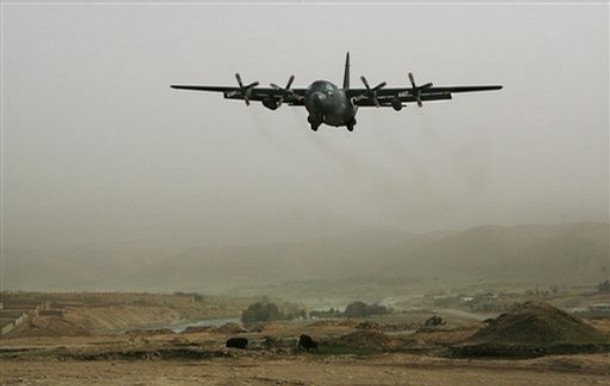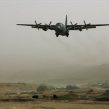
Afghanistan’s “Militia” Problem: Can Local Defense Forces Replace Private Security Firms?
Publication: Terrorism Monitor Volume: 8 Issue: 32
By:

Afghanistan’s President, Hamid Karzai, gave a speech on August 7 at the Civil Services Institute in Kabul in which he discussed his government’s reliance on foreign consultants and the role of private security firms. He proposed cuts to the former, and in the case of the latter, outright closure – heavily critical of what he argued is their role in perpetuating violence and instability in the country (Tolo TV, August 7). Karzai’s speech was hardly surprising in its content, and was illustrative of a longer-term concern, both in Afghanistan and in the West, with commercial providers of security and military services on the one hand, and their close cousins, warlords and private militias, on the other.
Karzai’s speech also came at a time of heightened sensitivity to several issues:
• Blurring of the conceptual lines between private militias, private security firms and local policing or self-defense units.
• Past damage caused to Afghanistan and its people by private armies and their potential to do more of the same now and in the future.
• American interest in bolstering local self-defense and policing capacity – with its clear potential as a militia feeder.
• Endemic Afghan government corruption.
• Anxiety over the withdrawal from ISAF of troop contributing states over the next few years.
There is little reason to expect, amidst all this, that legal, commercial and bureaucratic controls will prevent various security initiatives from eventually collapsing under the weight of private interests. There is every reason to expect that such tensions will continue to tug and pull at Afghanistan, perpetuating a vulnerable state of affairs much loved by insurgents. Ultimately, the elimination of surrogate forces – be they regulated, commercial providers of security and military services or illegally-armed groups in the service of individual warlords – is an experiment meant to favor both the state control of local militias and the timing of foreign troop withdrawal.
The Costs of Contracting
While U.S. strategy for Afghanistan is ostensibly focused on a 2011 withdrawal, attention has also recently turned to its sizeable contractor community. This is not a new story. A burgeoning Department of Defense contractor culture has been noted for several years now and in particular saw exponential growth following the 2003 invasion of Iraq. Abroad, large basing operations – like that at Kandahar – also represent a significant jackpot for local actors, who vie for access to base employment, service contracts and other economic vehicles. The expansion of International Security Assistance Force (ISAF) operations in Afghanistan since 2006 is thus a major target for corrupt practice.
Provision of security and military services is a narrower subset of contracted activities, but it is by far the most contentious given that it comes equipped for violence and, if recent history is any indication, a propensity for getting caught in individual displays of indiscipline and criminal behavior. Presently, the focus is on limiting the potential for corporate malfeasance by ensuring more active and transparent management of contracts. In early July, for example, NATO/ISAF established Task Force 2010. Headed by Rear Admiral Kathleen Dussault (U.S. Navy), the unit is responsible for ensuring the effective distribution of contracting funds for their “intended purpose” in support of ISAF’s counterinsurgency strategy (Tolo TV, July 8). [1]
Task Force 2010 is part of the International Contracting Corruption Task Force, which gathers and provides evidence of corrupt practices to Afghanistan’s government for further handling. This wider interest is meant to be consistent with the “Afghan First Policy,” which stipulates that U.S. “procurement and contracted work services” in Afghanistan should go to Afghan companies first, and if no such local capacity exists, it should be developed. [2]
Corruption complicates development processes everywhere, of course, and is hardly unique to Afghanistan. It has, however, been a prominent part of the public debate on Western support for the Karzai government, widely considered to be shot through with nepotism, graft and corruption. In that light, moves to abolish private security firms in Afghanistan would require high-stakes maneuvering between government and business elites. In theory, shutting them down should help consolidate the means of violence under the banner of the state – a baseline condition for a bolstered, self-reliant Afghanistan. Given the commercial stakes involved, however, whose interests are served or harmed by such measures remains an open question.
Local Self-Policing
Since taking command of ISAF this summer, U.S. Army General David Petraeus has placed responsibility for self-defense and self-policing squarely on Afghan shoulders – a move no doubt modeled on the successful use of tribal militias in Iraq and designed to foster Afghan self-reliance ahead of the withdrawal of U.S. and Allied forces. Statements made by various press officers and other sources suggest that there are challenges involved in effectively communicating this. One source explained the difference between Petraeus’ local policing project and private militias. The former, he explained, are “simple, local self-protection forces, more akin to a village security force,” whereas “militias or private armies operate at the behest of one individual.” Local self-protection forces would operate under Interior Ministry and local police control, and receive salaries from the government (Dawn [Karachi], July 13).
A number of cases have since been touted as success stories, but there is a degree of double-speak at work in how they are defined and promoted. Karzai, formerly critical of the creation of armed militias, has become an avid supporter of Petraeus’ local policing program, and ISAF officials have appeared in local media to press the case for it (Tolo TV, July 30). An ISAF press release in late July, for example, described the efforts of Afghans in the Pusht-e Rod district of Farah Province to repel insurgent elements from their villages. It went on to explain that “Pashtun communities have traditionally used a wide array of policing forces,” but “Coalition officials stressed these community watch programs are not militias; instead, they are defensive, village-level policing forces under the control of local shuras and jirgas, with a connection to the Afghan government.” [3]
Elsewhere, officials have provided contradictory or misleading details on the nature of a U.S. Army Special Forces program to train local self-defense units. This suggests that while such efforts may look good on paper, they may indeed, in practice, also live up to the fears of many Afghans who view them as little more than old wine in new bottles. [4] Afghan officials in Shindand district, for example, charged that they were not consulted in the formation of the “village defense forces,” and that such groups “had been deployed without coordination with local police.” Their counterparts in Kabul, on the other hand, have indicated otherwise – though not without qualification. By mid-July, a deal had been struck under which the village defense units would be subsumed” into Petraeus’ local police forces under Interior Ministry control. [5]
Conclusion
The Soviet-era experience with predatory militias (Arbaki) in Afghanistan will make the measure difficult to sell locally. Predictably, the creation of pro-government militias did not please existing armed groups at large in Afghanistan. A press release from the Taliban’s Islamic Emirate of Afghanistan said the move to form militias was nothing more than a revival of “that notorious and failed plan” to create such forces under the rule of Najibullah, the late Communist president of Afghanistan. The notorious militias of that time “not only ignited the fire of thefts, killings, barbarism and ethnic prejudice but they also became the cause of the failure of that regime” (Benawa.com, July 27). Gulbuddin Hekmatyar’s Hezb-i-Islami likewise said the formation of local militias would not yield any fruitful results (Shahadat [Peshawar], August 9).
In a commentary by Dr. Bashir Musa Nafi that appeared in pan-Arab daily al-Quds al-Arabi, the analyst noted:
"Tribal militias are nothing but a resurrection of the warlords and the armed gangs that caused havoc in the country in the years of infighting and civil chaos in the period between the Soviet withdrawal in 1989 and the moment when the Taliban imposed their authority on most of Afghanistan in 1996. There are considerable and essential differences between the Iraqi situation and the situation in Afghanistan, and it is difficult to transpose the Iraqi Awakening experience to the Afghan scene effectively… If militias become stable entities with local material interests, in the end, it is most likely that they will contribute considerably to the eruption of a civil war that will be more or less long, depending on different objective factors" (al-Quds al-Arabi, July 23).
Meanwhile, a broad range of Afghan media outlets has also roundly criticized the militia initiative. One Kabul newspaper asked who will guarantee that the militias will not attack people’s lives and assets, while a local weekly pointed out that the Arbaki were already a proven failure in Afghanistan (Manedegar [Kabul], July 20; Mosharekat-e Melli Weekly [Kabul], July 20). The proposal was also criticized as having benefits only for the Taliban and for allowing the possibility of the Taliban to exploit the plan to receive arms and other equipment (Payam-e Mujahed [Kabul], July 25; Arman-e Melli [Kabul], July 24).
Notes
1. See ISAF Public Affairs Office, “New Task Force Stands Up To Combat Contract Corruption,” ISAF Press Release (8 July 2010), URL: https://www.isaf.nato.int/article/news/new-task-force-stands-up-to-combat-contract-corruption.html.
2. ISAF Public Affairs Office, “Linking Contracting in Afghanistan To A Winning COIN Strategy,” ISAF Press Release (30 July 2010), URL: https://www.isaf.nato.int/article/isaf-releases/isaf-conference-focus-linking-contracting-in-afghanistan-to-a-winning-coin-strategy.html.
3. ISAF Joint Command – Afghanistan, “Afghans In Farah Take First Step Toward Stabilizing Communities,” ISAF Press Release (July 27, 2010).
4. “International Forces Deny Funding Afghan Militia,” Afghan Crisis Report (Institute for War & Peace Reporting, July 27, 2010).
5. Ibid.





